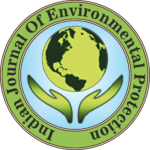IJEP 41(6): 698-702 : Vol. 41 Issue. 6 (June 2021)
Maipady Ramu Dhanraj* and A. Ganesha
Manipal Academy of Higher Education, International Center for Applied Science, Manipal – 576 104, India
Abstract
Disposal of treated sewage has been increasingly important in the development and planning of wastewater management. The objective of the study is to investigate the impact of artificial recharge of treated domestic sewage in an unconfined aquifer. Once the pollutant reaches the soil, there are several factors that affect the soil behaviour. Therefore, it is imperative to know the impact of disposal of treated sewage in different soils available locally in the coastal belt of the southwest coast of India. This study will help in easing the disposal in streams by adding up a new form of disposal in all-time weather conditions. The objectives of this study include treatment efficiency and its quality before and after the recharge in sand and soil as a dispersion media. The experimental model has shown enough potential in the removal of pollutant concentration in media dispersion. The percentage removal of dependent variables, such as biochemical oxygen demand and chemical oxygen demand is found to be 51.65% and 83.01%, respectively in the sand and also 83.34% and 50% in soil, respectively.
Keywords
Artificial recharge, Biochemical oxygen demand, Chemical oxygen demand, Treated domestic sewage, Unconfined aquifer
References
- Bouwer, H., G. Pyne and J. Goodrich. 1990. Recharging groundwater. Civil Eng., 63-66.
- Bouwer, H., et al. 1980. Rapid infiltration research at the flushing meadows project- Arizona. J. Water Poll., 52: 2457-2470.
- Bouwer, H. and R. C. Rice. 1984. Renovation of wastewater at the 23rd Avenue rapid infiltration project. J. Water Poll., 56: 76-83.
- Gilbert, R. G., J. B. Robinson and J. B. Mille. 1973. Microbiology and nitrogen transformations of a soil recharge basin used for wastewater renovation. International Conference on Land for waste management, Ottawa, Canada.
- Kopchynski, T., et al. 1996. The effects of soil type and effluent pre-treatment on soil aquifer treatment. Water Sci. Tech., 235-242.
- Lance, J. C., F. D. Whisler and R. C. Rice. 1976. Maximizing denitrification during soil infiltration of sewage water. J. Env. Quality. 102-107.
- Wilson, L. G., et al. 1995. Water quality changes during soil aquifer treatment of tertiary effluent. Water Env. Res., 67: 371-376.
- Pyne, D. R. G. 1995. Groundwater recharge and wells: A guide to aquifer storage recovery. Lewis Publishers, Ann Arbor, Michigan.
- Thawale, P. R., A. A. Juwarkar and S. K. Singh. 2006. Resource conservation through land treatment of municipal wastewater. J. Current Sci., 90: 704-711.
- Viswanathan, M. N., et al. 1999. Improvement of tertiary wastewater quality by soil aquifer treatment. Water Sci. Tech., 40(7): 159-163.
- Westerhoff and Pinney. 2000. Dissolved organic carbon transformations during laboratory-scale groundwater recharge using lagoon-treated wastewater. Water Manage., 20(1): 75-83.
- Yun, Zheng and Jian Long. 2006. A field study of advanced municipal wastewater treatment technology for artificial groundwater recharge. J. Env. Sci., 18(6): 1056-1060.
- Fadong, Li, et al. 2007. Tracing infiltration and recharge using stable isotope in Taihang Mt., North China. Env. Geol.,53: 687-696.
- Wax, F. B., Y. Davis and H. L. Shuval. 1986. Health risks associated with wastewater irrigation – An epidemiological study. American J. Public Health. 76: 977-979.
- IS 10500. 2012. Drinking water – specification (2nd revision). Bureau of India Standards, New Delhi.
- Clesceri, L. S., A. E. Greenberg and A. D. Eaton. 1998. Standard methods for the examination of water and wastewater (20th edn). American Public Health Association.
- Metcalf and Eddy. 2013. Wastewater engineering: Treatment and reuse. McGraw Hill, Boston.
